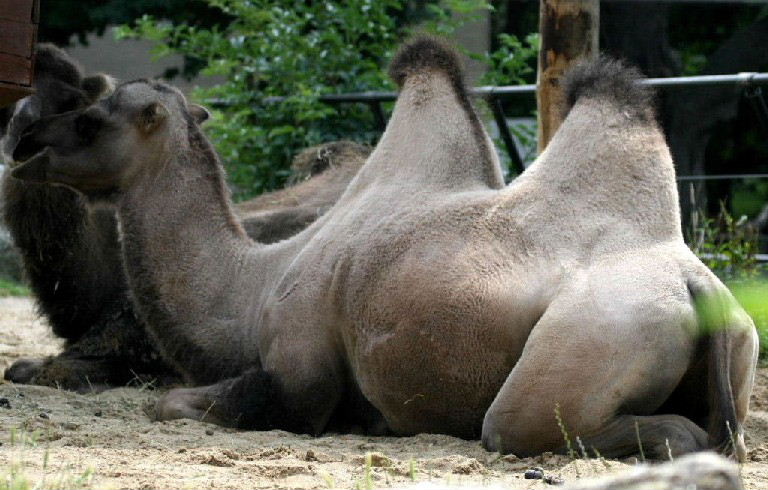Camels Camelus

"One lump or two?"
Camels are native to Asia and have evolved to live in deserts and go long distances on little water. The humps on their backs are fat reserves for energy, keeping the rest of the body cooler. The Dromedary or Arabian Camel has only one hump and the Bactrian Camel has two humps. Both are domesticated, but only Bactrians still exist in the wild.
Camels are native to Asia and have evolved to live in deserts and go long distances on little water. The humps on their backs are fat reserves for energy, keeping the rest of the body cooler. The Dromedary or Arabian Camel has only one hump and the Bactrian Camel has two humps. Both are domesticated, but only Bactrians still exist in the wild.


The Bactrian Camel, Camelus bactrianus, is mainly domesticated,
but some semi-wild or feral herds remain on the steppes and deserts of Central Asia. There is another species of Bactrain called the Wild
Bactrian Camel, Camelus ferus, which is genetically distinct, critically endangered
and remaining only in a few isolated areas of northwestern China and southern Mongolia.


Main visual differences between the "Bactrian" (above) and the "Wild Bactrian" (not shown) species are:
the Wild Bactrian is smaller with much smaller, more-separated humps; more slender (slimmer body, less-muscular legs, narrower feet);
humps are more pointed, less-rounded; ears are smaller; the skull is flatter; there is no shaggy topknot on the head; the coat is sandy-coloured
and the winter coat much lighter in colour and weight. The Wild Bactrian can also drink from springs much saltier than seawater, which
no other mammal can safely manage. The few hundred remaining Wild Bactrians are threatened by continued poaching.

 Photo from my mother's collection (Aden, 1944).
Photo from my mother's collection (Aden, 1944).
The Dromedary, Camelus dromedarius, is entirely domesticated, mainly in Arabia and East and North Africa,
although a feral group live in the wild in Australia.



